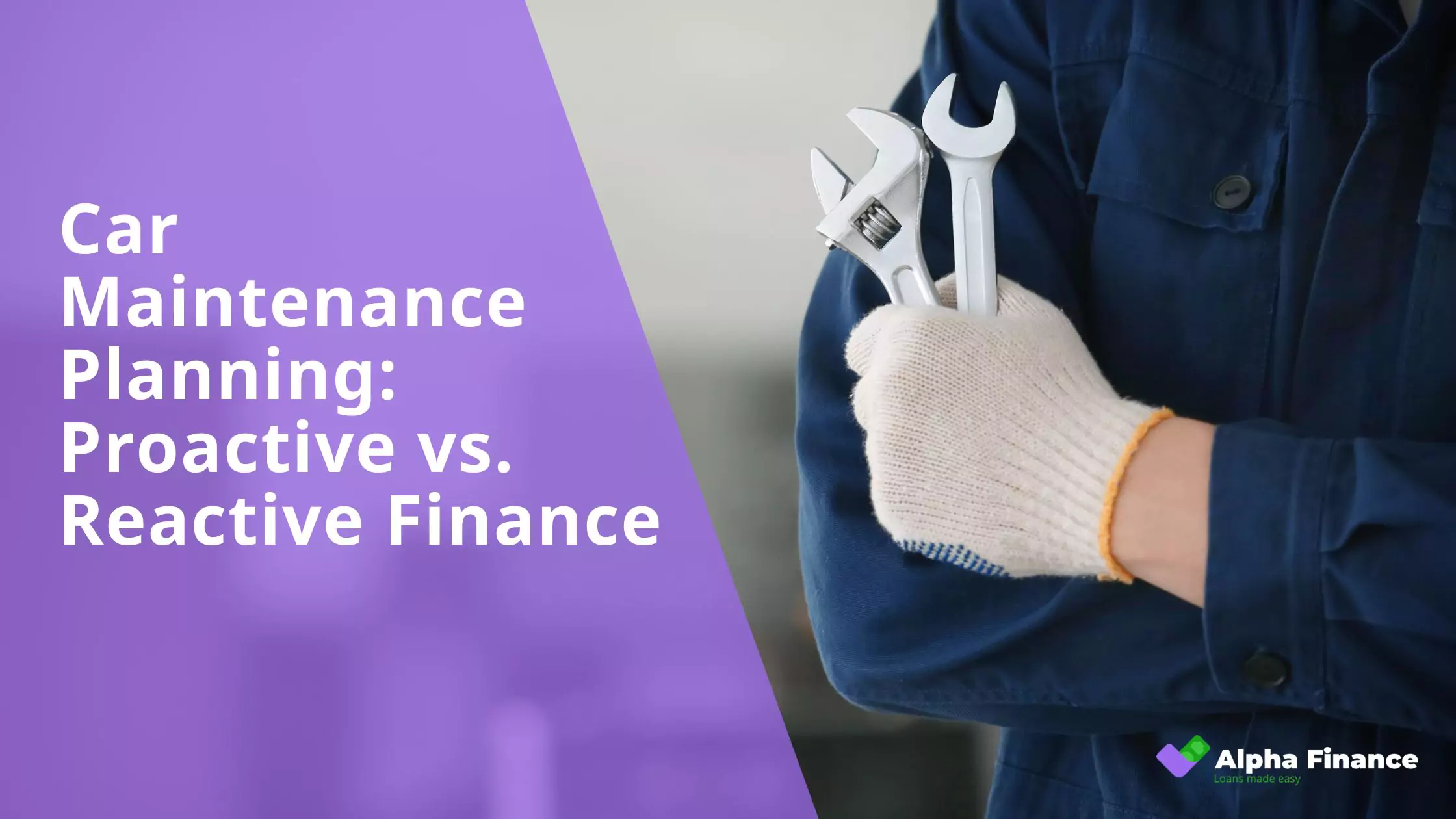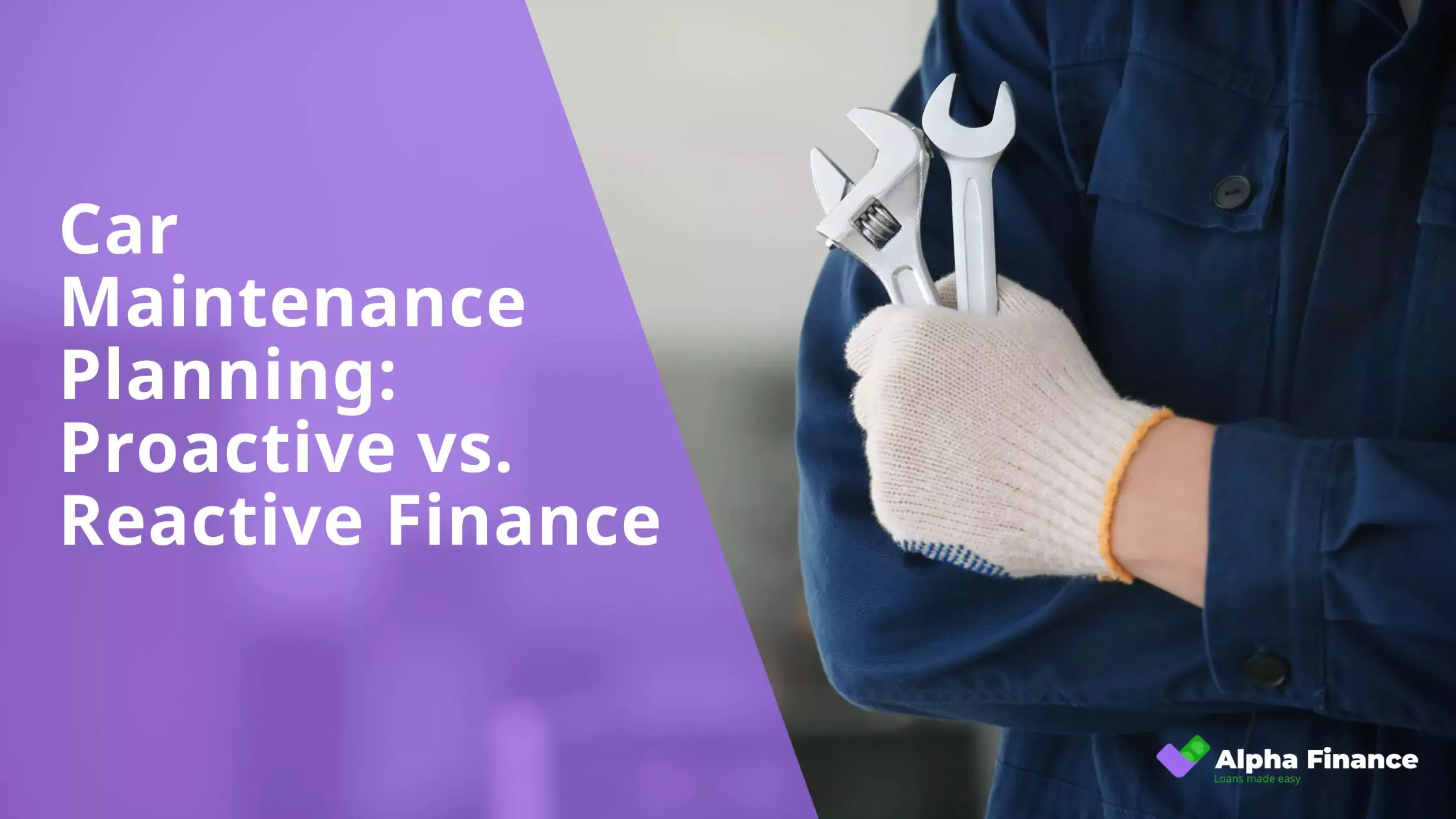That dreaded dashboard light, the unexpected shudder, or the sudden breakdown on the side of a busy road – unexpected car repairs can strike at any time, often hitting your wallet when you least expect it. For many Australians, our cars are central to daily life, whether it’s for the commute, school drop-offs, or weekend adventures. This reliance means that when something goes wrong, it’s not just an inconvenience; it can become a significant financial headache. Ignoring these issues, or being completely unprepared for them, can quickly lead to mounting stress, larger repair bills down the line, or even falling into debt, especially if you’re also managing car loans in Australia.
The reality is, car repairs are an inevitable part of vehicle ownership, regardless of how well you maintain your ride. The key isn’t to avoid them entirely – that’s often impossible – but to be financially prepared. This blog post will guide you through practical strategies and smart financial planning to mitigate the impact of these unwelcome surprises. We’ll cover essential tips on budgeting for car maintenance, building a dedicated savings fund, making informed choices about repairs, and ultimately, ensuring you’re financially resilient when your vehicle needs a little extra attention.
Why Financial Preparedness for Car Repairs is Crucial
Financial preparedness for car repairs isn’t just a wise suggestion; it’s a fundamental aspect of responsible vehicle ownership in Australia. Being proactive about potential mechanical issues can prevent significant stress and financial hardship.
-
The Inevitable Nature of Repairs:
- Universal Truth: All cars, regardless of their age or initial quality, will eventually require repairs. This is an undeniable fact of vehicle ownership.
- Contributing Factors: Various elements contribute to eventual breakdowns and the need for maintenance:
- Wear and Tear: Components naturally degrade over time with use.
- Age: Seals can perish, plastics can become brittle, and electrical systems can develop faults as a vehicle ages.
- Mileage: Higher kilometres mean more strain on parts.
- Driving Habits: Aggressive driving, frequent short trips, or driving in harsh conditions can accelerate wear.
- Environmental Factors: Exposure to extreme weather, dust, or corrosive elements can also impact vehicle longevity.
-
Avoiding Financial Strain:
- Preventing High-Interest Debt: Without a dedicated fund, an urgent repair can force you to rely on expensive financing options, such as high-interest credit cards or personal loans, leading to a cycle of debt.
- No More Delayed Repairs: Being prepared means you won’t have to delay critical repairs due to lack of funds. Delaying repairs can lead to:
- More Expensive Problems: A small issue can quickly escalate into a major, more costly repair (e.g., a minor fluid leak leading to engine damage).
- Safety Issues: Faulty brakes, worn tyres, or steering problems pose significant safety risks to you and other road users.
- Loss of Mobility: Your car might become undriveable, impacting your ability to commute, perform daily tasks, or fulfil family commitments.
-
Maintaining Vehicle Reliability and Safety:
- Consistent Performance: Promptly addressing repairs ensures your vehicle continues to operate safely and reliably, providing dependable transport for your daily needs.
- Protecting Your Investment: Your car is a significant asset. Regular maintenance and timely repairs help to:
- Preserve its Value: A well-maintained vehicle holds its resale value better.
- Extend its Lifespan: Proactive care can significantly extend the operational life of your car, delaying the need for a costly replacement.
-
Peace of Mind:
- Reduced Stress: When that dreaded dashboard warning light illuminates or an unexpected shudder occurs, knowing you have a financial plan in place drastically reduces the stress and anxiety associated with such events.
- Confidence in Action: You can confidently approach the repair process, knowing you have the means to address the issue properly, rather than scrambling for funds or compromising on quality. This peace of mind is invaluable for any Australian driver.
The Foundation: Building a Car Repair Emergency Fund
A dedicated car repair emergency fund is the most effective proactive step you can take to safeguard your finances against unexpected vehicle issues. It acts as your personal “self-insurance” policy for your wheels.
-
What is a Car Repair Emergency Fund?
- Dedicated Savings: This is a specific, separate savings account created solely for the purpose of covering unexpected vehicle maintenance and repair costs.
- Distinct from General Emergency Fund: It’s crucial to differentiate this from your broader emergency fund, which should be reserved for major life events like job loss, medical emergencies, or significant housing issues. Keeping them separate prevents you from depleting vital funds for car repairs.
-
How Much to Save:
- General Guideline: As a practical starting point for most Australian drivers, aim to accumulate at least $1,000 to $3,000. This range can often cover common moderate to significant repairs.
- Factors Influencing Your Goal: The ideal amount for your fund should be tailored to your specific situation:
- Age and Condition of Your Vehicle:
- Older Cars: Vehicles over five years old or with higher mileage will generally require a larger fund, as they are more prone to issues.
- Newer Cars: Even new cars can have unexpected faults, so a smaller initial fund is still recommended, increasing as the car ages.
- Make and Model: Research specific repair costs for your car. Some European luxury brands, for instance, are known for significantly higher parts and labour costs than common Japanese or Korean models.
- Driving Habits and Mileage: If you drive substantially high kilometres annually (e.g., over 20,000km), or regularly drive in demanding conditions (e.g., unsealed roads, heavy traffic), your car will experience more wear, necessitating a larger buffer.
- Common Repair Costs: Look up average costs for typical repairs specific to your car’s model year (e.g., alternator replacement, major scheduled service, timing belt replacement, brake overhaul). This provides a realistic target.
- Age and Condition of Your Vehicle:
-
Strategies for Building the Fund:
-
Consistency and discipline are key to growing your repair fund:
- Automate Savings: The most effective method. Set up regular, automatic transfers (e.g., weekly, fortnightly, or monthly) from your primary transaction account to your dedicated car repair savings account. Treat this transfer as a non-negotiable bill.
- Budgeting and Identifying Savings: Conduct a thorough review of your monthly budget. Look for areas where you can comfortably cut back on discretionary spending (e.g., fewer takeaway coffees, reviewing subscriptions, reducing entertainment expenses) and redirect those saved amounts directly into your repair fund.
- Windfalls: Direct any unexpected income, such as tax refunds, work bonuses, commission payouts, or gifts, straight into this fund. This can provide significant boosts.
- “Round-Up” Apps/Features: Many Australian banks now offer features that automatically round up your everyday debit card purchases to the nearest dollar and transfer the spare change into a nominated savings account. This is an effortless way to save.
- Sell Unused Items: Declutter your home and sell items you no longer need or use on online marketplaces. The proceeds can provide a good initial boost or ongoing contributions to your fund.
- Start Small, Be Consistent: Don’t be intimidated by the overall savings goal. Even small, regular contributions (e.g., $10 or $20 per week) will accumulate significantly over time due to compounding interest.
-
-
Where to Keep the Fund:
-
The location of your fund should balance accessibility for emergencies with opportunities for growth:
- High-Interest Savings Account (HISA): This is generally the best option. Look for online savings accounts that offer competitive interest rates, allowing your money to grow over time while remaining readily accessible when you need it for a repair.
- Offset Account (if you have a home loan): If you have a home loan, an offset account linked to it can be an excellent choice. While the money in the offset account doesn’t earn explicit interest, it directly reduces the amount of interest you pay on your mortgage, which can often be a more substantial saving than typical HISA interest.
- Keep it Separate: Regardless of where you keep it, ensure this fund is distinct from your everyday spending account. This minimises the temptation to dip into it for non-car-related expenses, ensuring the money is there when your vehicle truly needs it.
-
Proactive Maintenance: Your Best Defence
While an emergency fund provides a financial safety net, proactive maintenance is your primary defence against unexpected and costly car repairs. It’s about preventing small issues from becoming budget-breaking problems.
-
Stick to a Regular Service Schedule:
- Manufacturer Recommendations: Always follow the service intervals recommended by your car’s manufacturer (e.g., every 10,000 km or 12 months, whichever comes first). These schedules are designed to address wear and tear before it becomes critical.
- Preventative Care: Regular servicing allows mechanics to identify and address minor issues, perform fluid changes, and replace worn parts before they escalate into major, expensive breakdowns, often saving you significant money in the long run.
-
Address Minor Issues Promptly:
- Don’t Ignore Warnings: Never ignore warning lights on your dashboard, strange noises (like squealing brakes or grinding sounds), unusual smells (like burning oil or coolant), or changes in your car’s performance.
- Early Intervention Saves Money: Getting minor problems checked out by a mechanic as soon as they appear is crucial. A small fluid leak might be a cheap fix, but if ignored, it could lead to catastrophic engine damage.
-
Basic DIY Checks:
- Empower Yourself: Performing simple, regular checks at home can catch problems early and potentially save on professional labour costs for simple diagnoses.
- Key Checks Include:
- Regularly checking fluid levels (engine oil, coolant, brake fluid, power steering fluid).
- Monitoring tyre pressure (which affects fuel economy and tyre life) and tread depth (for safety and grip).
- Inspecting wiper blades for effectiveness and ensuring all lights are working.
- Early Detection: These small checks can provide early indicators of issues that need professional attention.
-
Find a Trusted Mechanic:
- Reliable Service: Establishing a relationship with a reputable and honest mechanic is incredibly valuable. They can provide reliable advice, perform quality work, and help you prioritise necessary repairs.
- How to Find One: Seek recommendations from friends and family, read online reviews, and don’t hesitate to get multiple quotes for larger jobs. A good mechanic will explain issues clearly and manage expectations.
-
Drive Smart:
- Reduce Wear and Tear: Your driving style significantly impacts your car’s longevity and repair frequency.
- Avoid Aggressive Habits: Steer clear of habits like hard acceleration, sudden braking, rapid cornering, and riding the clutch. These actions put excessive strain on your engine, transmission, brakes, tyres, and suspension components, leading to premature wear and increased repair needs. Smooth and gentle driving extends your car’s life.
Financial Management When a Repair is Needed
Even with proactive maintenance, unexpected repairs can still occur. When they do, having a plan for financial management is key to navigating the situation calmly and effectively.
-
Accessing Your Emergency Fund:
- First Line of Defence: Your dedicated car repair fund is exactly for this moment. Use it first to cover the cost of the repair.
- Prioritise Repairs: If funds are limited, discuss with your mechanic which repairs are essential for safety and drivability, and which can be delayed slightly.
- Replenish Quickly: After using your fund, make it a priority to replenish it as quickly as possible through your usual savings strategies or by directing any extra income towards it.
-
Understanding Quotes and Options:
- Detailed Breakdown: Always request a detailed written quote that clearly separates the costs for parts and labour. Ask for explanations if anything is unclear.
- Parts Options: Discuss whether genuine manufacturer parts, high-quality aftermarket parts, or reconditioned parts are available. Aftermarket or reconditioned parts can sometimes offer significant savings without compromising safety or performance.
- Delaying Repairs: Ask your mechanic if any recommended repairs can be safely delayed without causing further damage or compromising safety, allowing you time to save more.
-
Exploring Payment Options:
- Repair Shop Payment Plans: Some mechanics or service centres offer interest-free payment options (e.g., through third-party services like Payment Assist or Zip Pay). This can be a good way to spread costs without incurring interest, but ensure you understand the terms.
- 0% Interest Credit Cards: If you have excellent credit, a 0% interest credit card can be an option for larger repairs, provided you are absolutely certain you can pay off the entire balance within the interest-free period. Use this with extreme caution, as high interest rates apply once the period ends.
- Personal Loans: As a last resort for very large, unavoidable repairs that your emergency fund cannot cover, a personal loan might be considered. Always compare interest rates carefully from different lenders to find the most competitive option.
-
Check Your Warranty/Insurance:
- Existing Cover: Before authorising any work, check if the repair is covered by your car’s manufacturer’s warranty (if still active), any extended warranty you purchased, or if your roadside assistance membership includes specific repair benefits. This can save you from paying out of pocket.
Broader Financial Planning for Car Ownership
Effective financial planning for car ownership extends beyond just a repair fund; it involves integrating all vehicle-related expenses into your overall budget.
-
Factor in All Car Costs in Your Budget:
- Comprehensive Budgeting: Don’t just allocate funds for fuel and any car loans you might have. Your car budget should realistically account for:
- Annual registration fees.
- Compulsory Third Party (CTP) insurance.
- Comprehensive car insurance premiums.
- Scheduled servicing costs.
- An allocated, regular amount directed towards your car repair emergency fund.
- Comprehensive Budgeting: Don’t just allocate funds for fuel and any car loans you might have. Your car budget should realistically account for:
-
Consider Car Insurance Levels:
- Beyond Breakdowns: While comprehensive insurance is vital for protecting your car and third-party property from accident damage, fire, and theft, remember it does not cover mechanical breakdowns or wear-and-tear repairs. It’s a separate but essential layer of protection for different types of incidents.
-
Car Choice and Reliability:
- Research Before Buying: When purchasing a car, research its long-term reliability and the average cost of parts and labour for common repairs for that specific model. This upfront research can significantly influence your future repair budget.
- New vs. Older Cars: Newer cars might have fewer immediate repair needs and often come with longer manufacturer warranties, but they have higher purchase prices. Older cars might be cheaper to buy outright but typically require a larger ongoing repair budget. Balance purchase cost with anticipated running costs.
-
Review Regularly:
- Dynamic Needs: Your financial situation and your car’s needs are not static. It’s crucial to review your car budget and your car repair fund goal annually. Adjust your savings contributions as your car ages, your mileage changes, or if major life events alter your financial capacity.
Conclusion
Proactive financial planning for unexpected car repairs isn’t just about saving money; it’s about securing your peace of mind, ensuring your safety on Australian roads, and diligently maintaining a valuable asset. By setting aside a dedicated car repair fund and committing to regular maintenance, you empower yourself to face inevitable vehicle issues head-on, transforming potential financial crises into manageable inconveniences. Don’t let a flat tyre or a faulty engine derail your financial journey. With smart planning, you can navigate the bumps in the road with confidence and keep your car running smoothly for years to come.
Affordable Car Loans: Drive Your Dream Today
Dreaming of a new car but worried about the upfront cost? Affordable car loans can make that dream a reality, offering flexible financing solutions to suit your budget. Whether you’re a first-time buyer or looking to upgrade, securing the right car loan means you can drive away in the vehicle you need sooner, without compromising your financial stability. With competitive rates and tailored repayment options, getting the keys to your dream car is more accessible than ever. Ready to take the next step? Explore competitive car loan solutions with Alpha Finance Australia today and discover how easy it can be to drive your dream.




